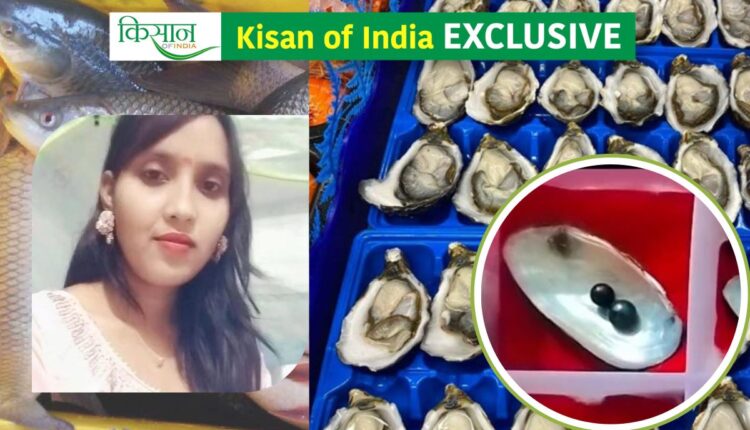Pearl farming along with fish farming, Pooja Vishwakarma is known as ‘Pearl Queen’
Let's learn to grow pearls at home, the first woman farmer of Chhattisgarh who is earning profit by growing pearls at home
Page Contents
Pooja has now brought her desire of extracting pearls from the depths of the sea into her own courtyard. If you want a good quality pearl, you do not need to dive into the sea. There is no need to spend vast amounts of money. Meet the only woman farmer from the Bilaspur district of Chhattisgarh, who is growing pearls at her home and earning lakhs. Pooja Vishwakarma, 28, has studied till the 12th and is known for pearl farming in her area. Kisan of India spoke in detail to Pooja Vishwakarma on pearl farming.
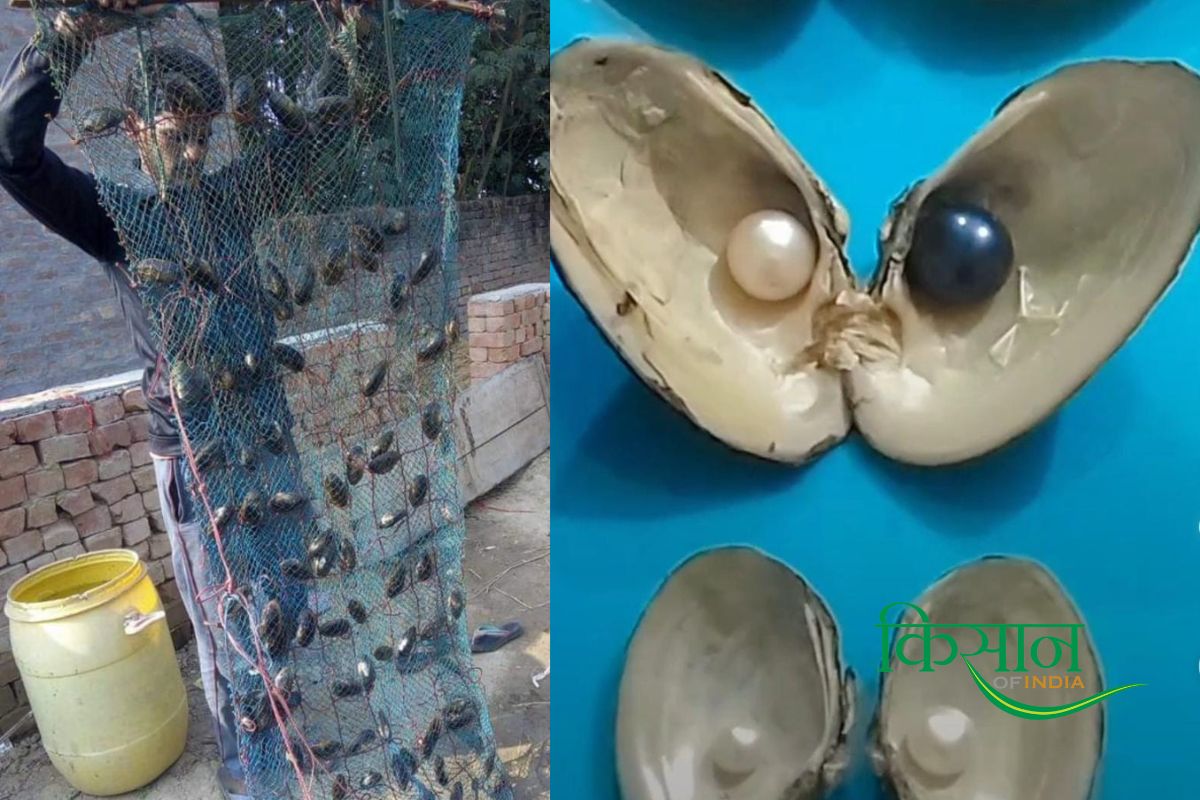
How did you start pearl farming?
Pooja Vishwakarma says that her elder sister always wanted her to become the first person in the state to cultivate pearls. However, before this, she had no experience in farming. The elder sister learned pearl farming by doing all the research and taking training. Pooja says- I got training from my elder sister. But unfortunately, she died. Her last wish was that the dream she had seen should be fulfilled at any cost. So, I took up pearl farming alone.
How much does pearl farming cost?
Pooja Vishwakarma started a pearl farming business 6 years ago with a cost of Rs 40 thousand. After struggling continuously for 2 years, she succeeded. Many times, due to an increase in the pH level of water and lack of maintenance, oysters got damaged. Despite all this, Pooja continued doing research. Through her continuous research and experimentation, she finally not only learned the intricacies of pearl farming but is also promoting the pearl farming business in her area today.
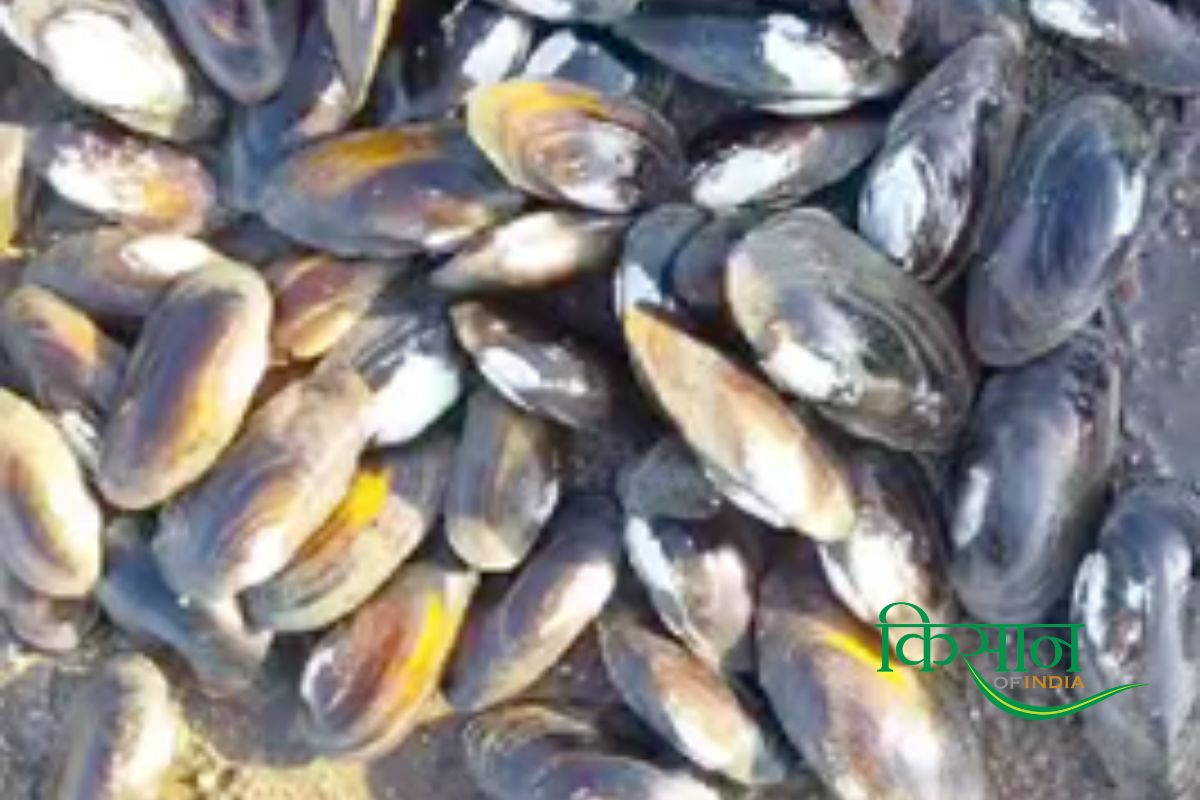
How are pearls cultivated?
1. Tank construction and cost
Pooja Vishwakarma said you can make a 10*10 size tank at home, which costs around Rs 9 to 10 thousand. If you want to start with something other than cement tanks, then plastic tanks are also available in the market, which cost two and a half to three thousand rupees. Apart from this, if you want to cultivate pearls on a large scale, then a pond is the best option.
2. Indoor or outdoor, what is the better option?
Pooja says that if your budget is limited and there is enough space for tank construction at home, then an indoor tank is a good option because during the construction of an outdoor tank, to maintain the temperature, a shed will also have to be constructed to protect it from heat and sunlight, due to which, the cost increases.
3. Oxygen Machine
To maintain the oxygen level in water, an oxygen machine is required, which is easily available in the market at a price of Rs 300 to Rs 1000 and above. If the oxygen level in the tank is low, then the oysters die quickly. Therefore, there is a need to take special care of this factor.

Fish farming, along with pearl farming
There are many benefits of fish farming along with pearl farming. Pearl farming is done in the pond or small tank. The most significant advantage is that pearl farming farmers can also do fish farming in the same water. This reduces cost and increases profit by doing two activities simultaneously.
Pooja says that fish farming is done in the tank for good growth of oysters and to maintain the amount of oxygen in the water naturally. For this, she keeps Rohu or Katla species in her tanks.
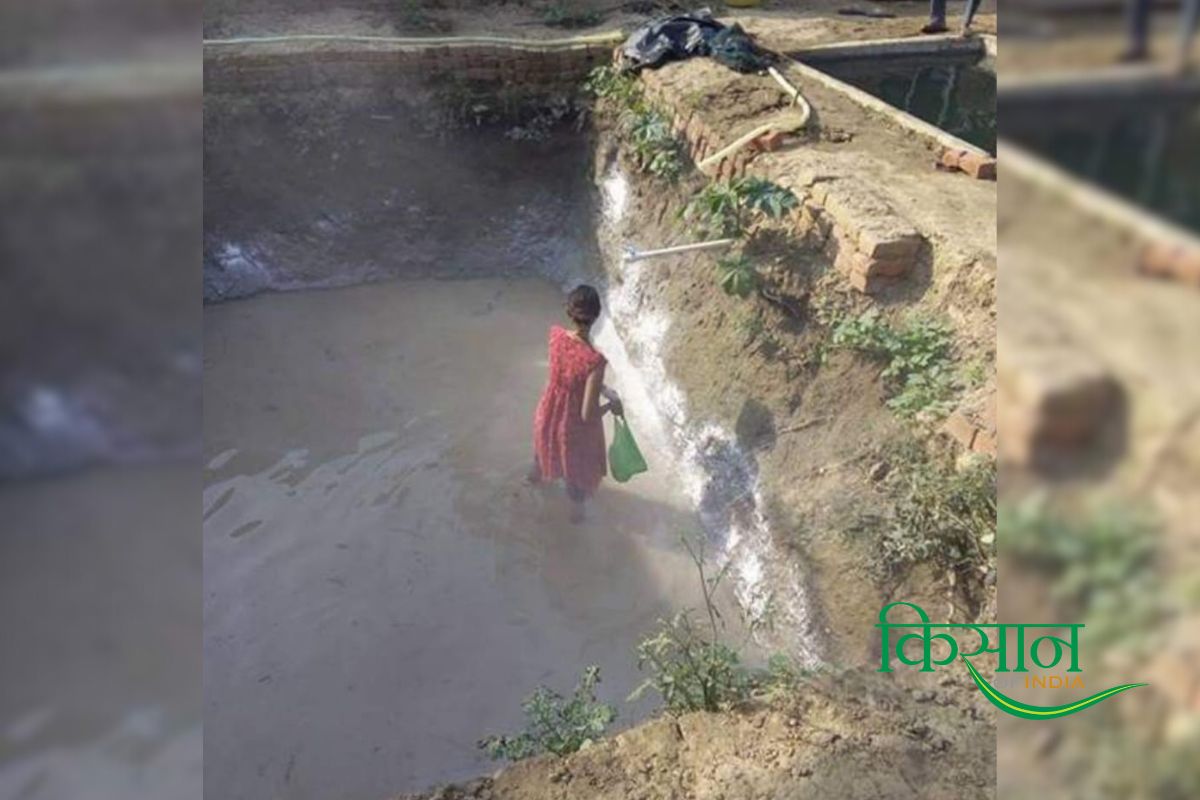
Fish farming along with Pearl farming: What should be the precautions?
Pooja says that if there is a tank of 10*10 size, you can rear 20 Rohu or Katla.
These fish are available for Rs 5 to Rs 30 per piece.
It is vital to feed the companion fish from time to time. Otherwise, due to the lack of sufficient grains, the fish start eating oyster muscles.
What are pearl seeds?
Pooja said that good-quality seeds and shells are available in Raipur, the capital of Chhattisgarh. Along with this, Pooja has now started manufacturing seeds herself. The nucleus is used to produce pearl seeds. These are made from oyster powder.
Price of oyster in pearl farming
The price per seed is Rs 10, and the price of an oyster depends on its quality. A single shell is available in the range of Rs 200 to Rs 500 and even Rs 2000.
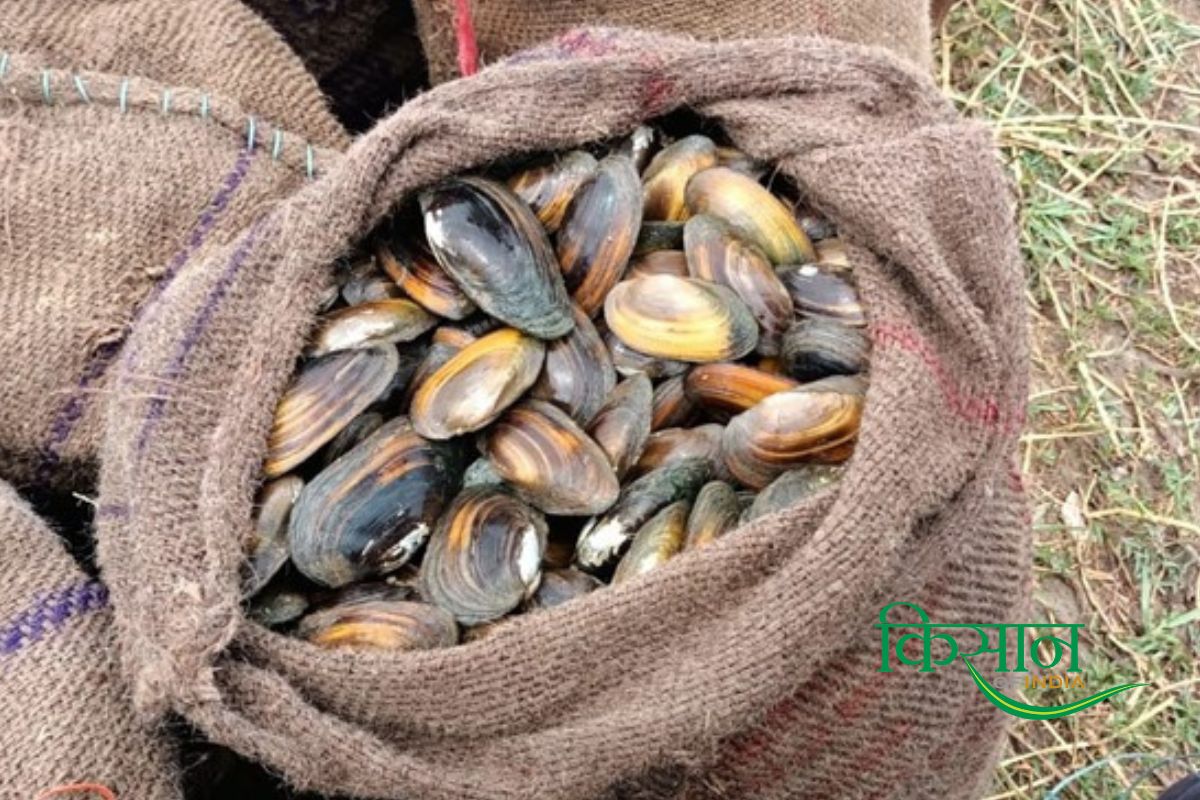
pH value of water in pearl farming
Although pearls are found in salt water in the depths of the sea, the pearls prepared at home are made in fresh water, and green water is also used.
Green water is added as oyster food because it contains green algae, which the oysters eat and promote good growth.
How is oyster surgery done in pearl farming?
Pooja Vishwakarma told that after surgery of the seed, a nucleus is inserted inside it, due to which the pearl is formed. Through a process, an incision is made on the shells. After making the incision, a mould is inserted inside the shells. After this, the oysters are kept in a pond or tank and left for about 8 months. After surgery, the oyster is placed in a net and hung vertically in the tank. During this, the oyster releases a liquid from itself, which is called necker.
As the necker comes out of the shell, The oyster freezes, i.e., it becomes hard. Then, after about 8 months, the pearl is taken out through an incision through a process. The price of these pearls is quite good in the market, and their demand has also increased.
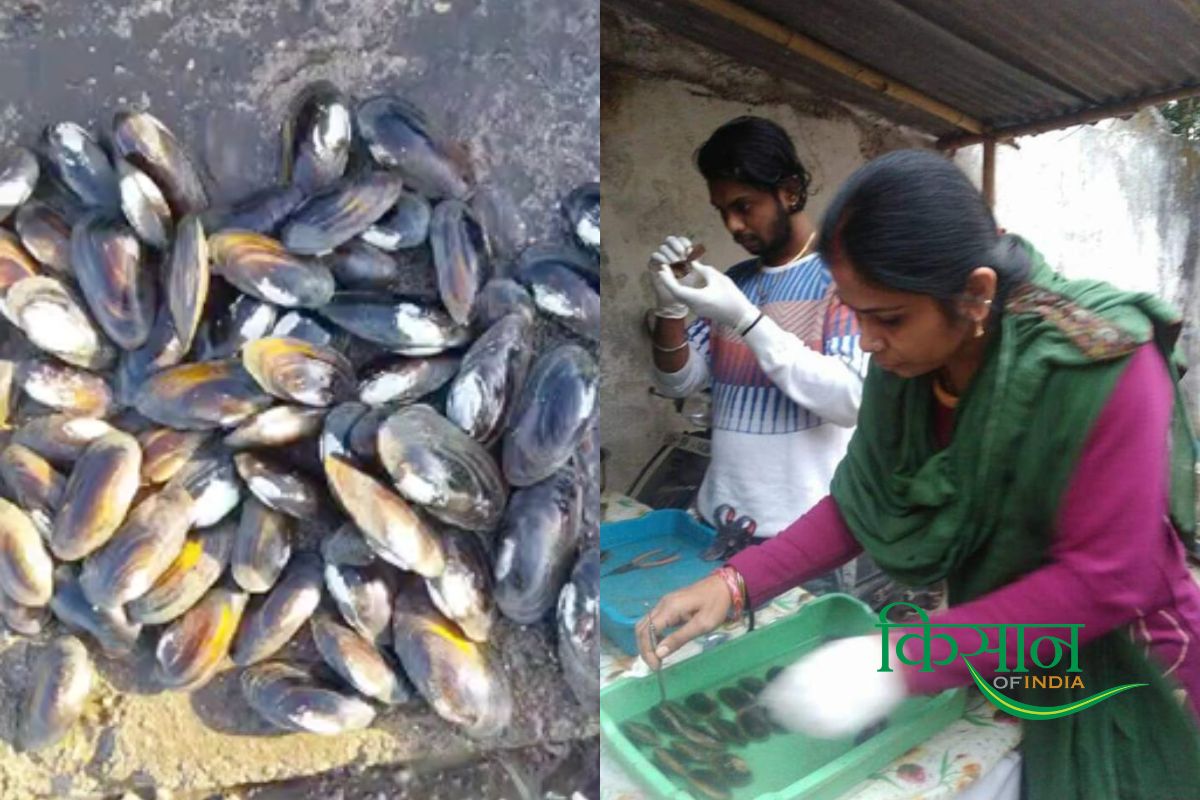
Cleanliness in pearl farming
Pooja says that it is necessary to clean the tank and water twice a week so that there is no infection in the fish and oysters. If you do not clean the water from time to time, not only the fish will die, but the oysters will also die.
How long does it take to make a pearl?
After surgery, if proper maintenance is done and favourable environment is provided, then pearls are ready within 8 to 10 months.

How much does a pearl sell for?
Pooja told that when she prepares pearl, its price depends on its colour and quality. The price of one pearl ranges from Rs 200 to Rs 500, and pearls of the above category are sold in the market at Rs 1,500 to Rs 2,500 per piece. Off-white, pink, and light blue coloured pearls are in great demand.
How much profit is there in pearl farming?
At a cost of Rs 50,000 per tank, Pooja earns Rs 1 lakh 50 thousand in 8 to 10 months.

How can damaged oysters be used?
Pooja says that she does not waste anything. The damaged shells are used to make jewellery and decorative items, which are sold for Rs 300 to Rs 700.
Free training in pearl farming
Pooja also provides free training to women to be self-employed and not have to wander here and there in search of work. Till now, Pooja has given training to more than 2000 women from across the country.
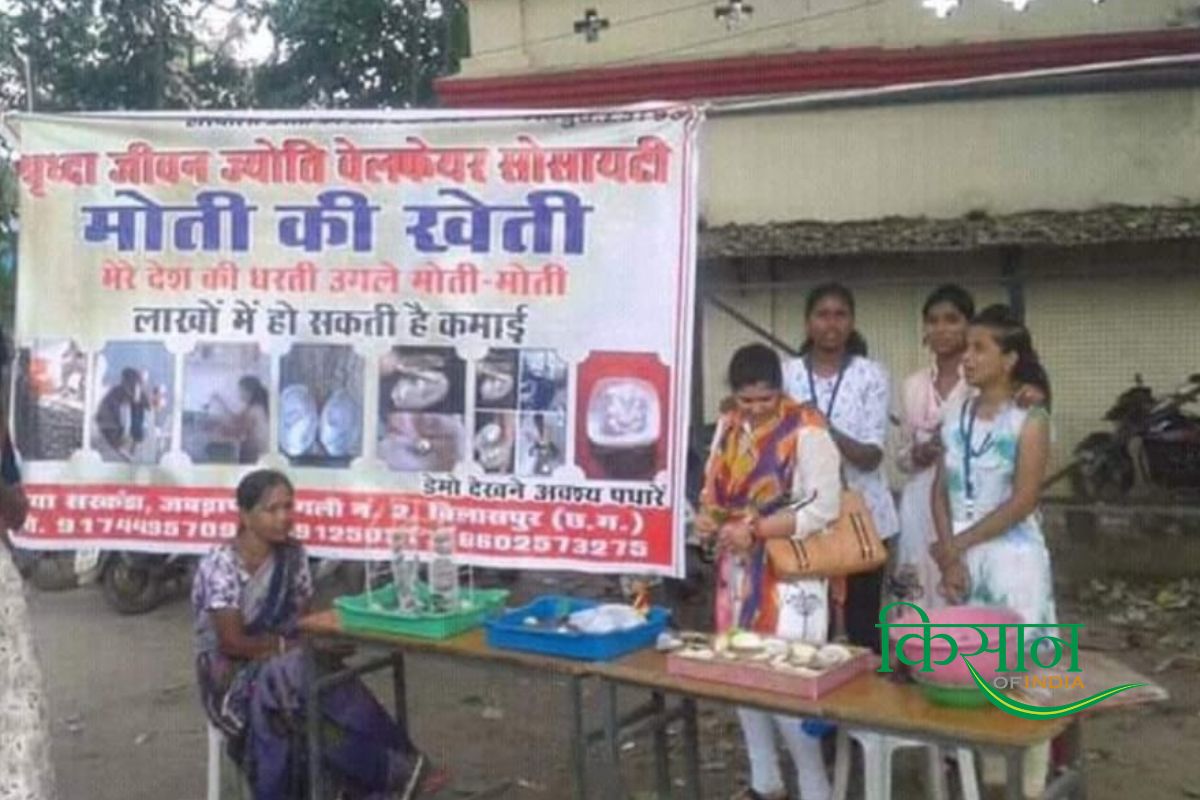
Also Read: Ankush Giri succeeded in Pearl Farming by learning from failures
Contact us – If farmers want to share any valuable information or experiences related to farming, they can connect with us via phone or whatsapp at 9599273766 or you can write to us at “[email protected]”. Through Kisan of India, we will convey your message to the people, because we believe that if the farmers are advanced then the country is happy.
You can connect with Kisan of India on Facebook, Twitter, and Whatsapp and Subscribe to our YouTube channel.



